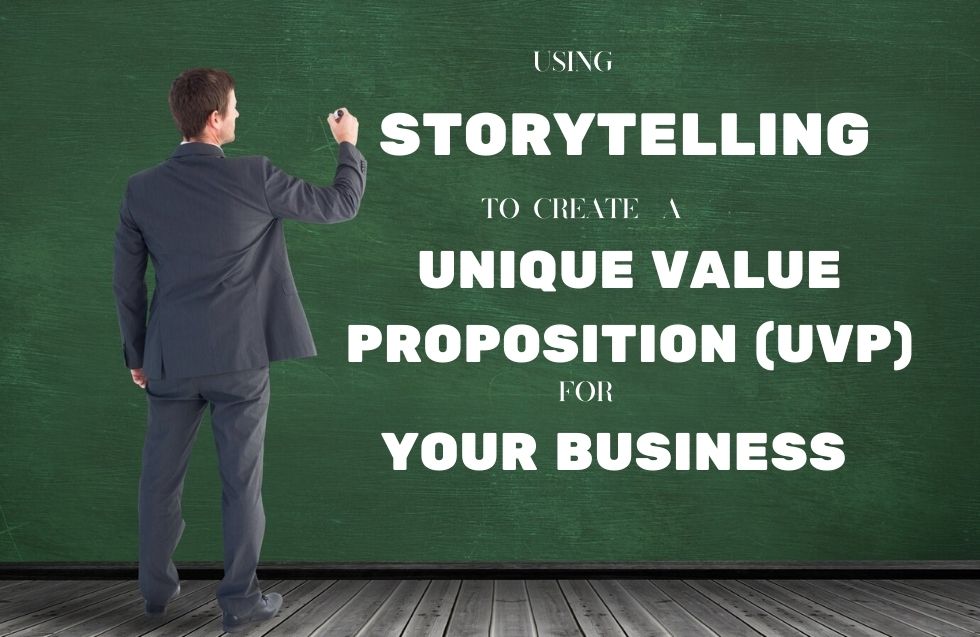In a crowded marketplace, businesses must stand out and connect with their target audience. One of the most effective ways to achieve this is through a compelling Unique Value Proposition (UVP) enhanced by storytelling. A UVP answers the key question, “Why should a customer choose your product or service over the competition?” By incorporating storytelling, your UVP becomes not only informative but also emotionally engaging and memorable.
What is a Unique Value Proposition (UVP)?
A Unique Value Proposition is a clear statement that explains the benefits of your product or service, how it solves customer problems, and what makes it stand out from the competition. A well-crafted UVP should be:
- Clear and concise – Instantly communicate your unique offering.
- Specific – Tailored to your audience’s needs.
- Customer-focused – Emphasize the value your customers will receive.
The Power of Storytelling in Your UVP
Storytelling goes beyond simply listing features and benefits. It taps into emotions, creates lasting impressions, and makes your UVP resonate deeply with potential customers. Here’s why storytelling works in a UVP Unique Value Proposition:
- Emotional connection – Stories humanize your brand and help build trust with your audience.
- Memorability – People are more likely to remember stories than generic marketing messages.
- A clear illustration of value – A story demonstrates how your product or service can solve a problem or improve a customer’s life.
Using Story Illustrations to Strengthen Your UVP
A powerful way to enhance your storytelling-driven Unique Value Proposition UVP is by using story illustrations. Illustrations, whether visual or metaphorical, bring the narrative to life, making it easier for customers to connect with your message. Here’s how you can integrate story illustrations effectively:
1. Visual Imagery
When you illustrate your UVP visually, it can help customers quickly grasp the message. This could be through videos, infographics, customer photos, or even hand-drawn illustrations. These visuals should support the core message of your Unique Value Proposition UVP and make it easier for your audience to understand the benefits of your product or service.
Example: If you run an eco-friendly packaging company, you could use before-and-after illustrations to show how switching to your sustainable packaging solution reduces environmental waste. The visual transformation tells the story of impact more effectively than words alone.
2. Metaphorical Storytelling
Sometimes, using metaphors in storytelling can paint a clearer picture for your audience. A metaphor or analogy can simplify complex concepts and highlight the uniqueness of your offering in a relatable way.
Example: A cloud storage service might compare its solution to “a digital safety net” that ensures users never lose important data. This metaphor tells a story of reliability and security in a way that customers can easily relate to.
3. Customer Journey Illustrations
Illustrating your customer’s journey helps highlight the transformation your product or service brings. Visual elements that depict your customer’s challenges, the solution you offer, and the positive outcome make your Unique Value Proposition UVP more engaging and persuasive.
Example: A fitness app might illustrate a user’s journey from feeling overwhelmed by health goals to achieving fitness milestones with personalized plans and support from the app. This shows potential customers how they, too, can transform their lives using your product.
4. Interactive Storytelling
Interactive storytelling tools such as animations, quizzes, or videos can enhance your Unique Value Proposition UVP. These tools allow customers to engage with your story and experience it in real-time, which can leave a lasting impression.
Example: A home improvement brand might offer an interactive video showing how a dull backyard transforms into a beautiful oasis with their DIY products. This immersive storytelling experience brings the UVP to life, allowing potential customers to visualize the product’s impact.
Steps to Build a Story-Driven UVP with Illustrations
- Know Your Audience’s Pain Points Start by deeply understanding your audience. What are their challenges? What are they looking for in a product or service? Use this knowledge to tailor your UVP around their needs, which will guide your storytelling.
- Tell the Brand’s Origin Story Every business has a story of how it came to be. Whether it’s overcoming adversity or a founder’s personal journey, sharing this narrative helps humanize your brand. Combine this story with visual elements such as photos of your team or hand-drawn illustrations that show the initial stages of your business.
Example: A vegan restaurant might use illustrations of the founder’s journey from struggling with dietary restrictions to creating delicious, plant-based meals that everyone can enjoy. This shows customers the passion and personal connection behind the product. - Use Customer Stories and Visuals Real-life customer stories are some of the most powerful forms of storytelling. Show, through images or videos, how your product has transformed customers’ lives. Feature “before-and-after” illustrations, customer testimonials, or case studies with visuals that support the narrative.
- Emphasize the Hero’s Journey In the story of your Unique Value Proposition UVP, the customer is the hero, and your product is the tool that helps them succeed. Frame the narrative around the customer’s challenges, how your product helps them overcome obstacles, and the positive results they achieve.
Example: A productivity tool could visually show a busy professional struggling to manage tasks before using the tool, followed by an organized and stress-free workflow afterward. - Incorporate Transformation Images Illustrate how your product or service leads to transformation. This can be visual (e.g., someone before and after using a skincare product) or conceptual (e.g., a metaphorical image of moving from darkness to light to show personal growth).
Example: A financial coaching business might visually depict a customer drowning in bills, followed by an image of them confidently managing their finances, with vibrant illustrations showing the step-by-step process.
Examples of Storytelling-Driven UVPs with Illustrations
- Patagonia: Patagonia’s UVP revolves around sustainability and protecting the environment. Their website and marketing materials feature stunning images of nature and customers enjoying the outdoors, reinforcing the brand’s story of environmental stewardship.
- Slack: Slack’s UVP is about making team communication effortless and fun. They use whimsical, colorful illustrations and videos to show how their product reduces the chaos of emails and creates a more productive, enjoyable workplace.
- Dollar Shave Club: Dollar Shave Club’s UVP is all about delivering affordable, high-quality razors to your door. They use humorous storytelling and dynamic visuals to show how their product is a simple solution for men tired of overpriced shaving gear.
Final Thoughts
Using storytelling and story illustrations to create a UVP is a powerful way to differentiate your business. When you combine emotional, narrative-driven content with compelling visuals, your UVP becomes more engaging and easier for customers to remember. Storytelling doesn’t just explain why your product is valuable. It makes your audience feel the value, which is key to building lasting customer loyalty.












